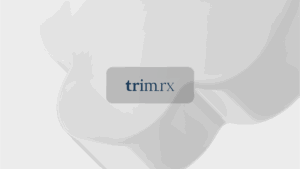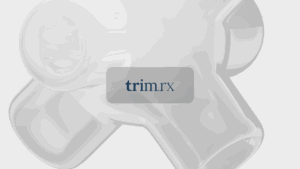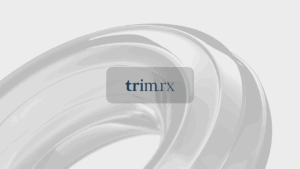Do Push-Ups Burn Belly Fat? Exploring the Facts and Benefits

When it comes to achieving fitness goals, particularly losing belly fat, many individuals find themselves sifting through a plethora of exercise options and advice. One question that frequently arises is: Do push-ups burn belly fat? While this classic exercise is often touted for its strength-building benefits, the relationship between push-ups and fat loss—especially around the midsection—deserves a closer examination.
In this blog post, we will analyze the mechanics of push-ups, their role in a comprehensive fitness regimen, and how they contribute to burning calories and promoting overall fat loss. We’ll also explore effective strategies for incorporating push-ups into your workout routine to maximize their benefits.
Introduction
Did you know that performing push-ups can engage multiple muscle groups, including your chest, shoulders, and core? This compound exercise is a staple in many workout routines and is celebrated for its convenience and versatility. However, when it comes to specifically targeting belly fat, the science is a bit more nuanced.
In recent years, the focus on fitness has shifted from merely achieving aesthetic goals to embracing overall health and well-being. With this shift, understanding how different exercises contribute to fat loss—including belly fat—has become essential for those looking to adopt a sustainable fitness routine.
By the end of this article, you’ll learn about the effectiveness of push-ups as a fat-burning exercise, how to perform them correctly, and ways to enhance your workout routine. We’ll also discuss the importance of combining strength training with cardiovascular exercise and proper nutrition for optimal fat loss.
Let’s delve deeper into the topic and discover how push-ups can fit into your weight loss journey.
The Mechanics of Push-Ups
Push-ups are a bodyweight exercise that primarily targets the upper body, specifically the pectoral muscles, deltoids, and triceps. However, they also engage the core muscles, making them a full-body workout. Here’s a breakdown of how push-ups work:
Muscle Engagement
When you perform a push-up, several muscle groups are activated:
- Pectoralis Major: The primary muscle worked during push-ups, responsible for chest strength.
- Deltoids: The shoulder muscles aid in stabilizing and moving your arms during the exercise.
- Triceps: Located on the back of your arms, these muscles are essential for pushing your body back up during the exercise.
- Core Muscles: Your abdominal muscles, including the rectus abdominis and obliques, work to stabilize your body and maintain proper form.
Calories Burned
Although the exact number of calories burned while doing push-ups can vary based on factors like body weight and intensity, estimates suggest that performing push-ups can burn approximately 7 to 10 calories per minute. This calorie burn is relatively modest compared to other high-intensity exercises, but push-ups can still contribute to your overall caloric expenditure when included in a broader workout routine.
Do Push-Ups Target Belly Fat?
The concept of spot reduction—losing fat in a specific area of the body through targeted exercises—is largely a myth. While push-ups can help strengthen and tone the muscles in your core, they do not directly target belly fat. Here’s why:
Fat Loss Basics
Fat loss occurs when you maintain a caloric deficit, meaning you burn more calories than you consume. This can be achieved through a combination of proper nutrition, cardiovascular exercise, and strength training. Push-ups, while beneficial for building muscle, need to be part of a comprehensive exercise plan to see significant fat loss, including in the belly area.
Incorporating Push-Ups into a Fat Loss Routine
To effectively use push-ups as part of your strategy to reduce belly fat, consider the following tips:
-
Combine with Cardiovascular Exercise: Incorporate high-intensity interval training (HIIT) or steady-state cardio alongside push-ups to maximize your calorie burn. Activities like running, cycling, or swimming can increase your heart rate and help create the caloric deficit necessary for fat loss.
-
Maintain a Balanced Diet: Focus on a diet that prioritizes whole foods, lean proteins, fruits, vegetables, and healthy fats. Creating a balanced diet will support your fat loss goals and provide the necessary nutrients for muscle recovery.
-
Implement Variations: To keep your workout engaging and challenging, incorporate different push-up variations. Options include incline push-ups, decline push-ups, and wide-grip push-ups, which can target various muscle groups and enhance overall strength.
-
Track Your Progress: Regularly assess your performance and make adjustments to your workout routine. This could mean increasing the number of repetitions, adding weights, or modifying the intensity of your workouts.
The Benefits of Push-Ups
While push-ups may not directly burn belly fat, they offer numerous benefits that contribute to overall fitness and well-being:
1. Strength Building
Push-ups are an effective way to build strength in your upper body and core. Increased muscle mass can elevate your resting metabolic rate, which means you’ll burn more calories throughout the day.
2. Convenience
One of the greatest advantages of push-ups is that they require no equipment and can be performed anywhere, from your living room to the park. This makes them an accessible choice for individuals at any fitness level.
3. Improved Endurance
Regularly practicing push-ups can enhance muscular endurance, which translates to better performance in other exercises and daily activities.
4. Enhanced Core Stability
A strong core is essential for maintaining good posture and preventing injuries. Push-ups engage the core muscles, helping to improve stability and overall functional fitness.
5. Cardiovascular Health
Incorporating push-ups into a higher intensity workout can provide cardiovascular benefits as they elevate your heart rate and promote better cardiovascular fitness.
How to Perform Push-Ups Correctly
To maximize the benefits of push-ups, proper form is crucial. Here’s a step-by-step guide to performing a standard push-up:
-
Start Position: Begin in a plank position with your hands slightly wider than shoulder-width apart and your feet together. Your body should form a straight line from head to heels.
-
Engage Your Core: Tighten your abdominal muscles to maintain stability and prevent sagging in your lower back.
-
Lower Your Body: Bend your elbows at a 45-degree angle, lowering your body toward the floor. Keep your elbows close to your body.
-
Push Back Up: Once your chest is just above the ground, press through your palms to return to the starting position, fully extending your arms.
-
Repetitions: Start with 2-3 sets of 5-10 repetitions if you are a beginner, and gradually increase as your strength improves.
Common Mistakes to Avoid
- Sagging or Arching the Back: Maintain a straight line from head to heels throughout the movement.
- Flared Elbows: Keep your elbows tucked to protect your shoulders.
- Inconsistent Breathing: Exhale as you push up, and inhale as you lower your body.
Alternatives to Push-Ups for Targeting Belly Fat
While push-ups are a valuable exercise, it’s beneficial to incorporate a variety of movements into your routine. Here are some alternatives that can also help in reducing belly fat:
- Planks: Engage your core without the dynamic movements of push-ups.
- Mountain Climbers: Combine cardio and strength for a high-intensity workout.
- Burpees: A full-body exercise that elevates your heart rate and burns calories.
Conclusion
In summary, while push-ups are an effective strength-building exercise that engages multiple muscle groups, they do not specifically target belly fat. To achieve noticeable fat loss, a combination of strength training, cardiovascular exercise, and a balanced diet is essential. Push-ups can certainly play a role in this process, but they should be complemented with other forms of exercise and healthy eating habits.
So, as you continue your fitness journey, consider incorporating push-ups into your routine, but remember to focus on a holistic approach that includes various exercises and lifestyle choices. Together, let’s work towards achieving our fitness goals and embracing healthier lifestyles.
FAQ
Can I lose belly fat by only doing push-ups?
No, losing belly fat requires a caloric deficit, which can be achieved through a combination of diet and various forms of exercise, including cardio and strength training.
How many push-ups should I do to see results?
Start with what you can comfortably do, aiming for at least 3 sets of 10-15 push-ups. Gradually increase the number as you build strength.
Can push-ups be done every day?
Yes, push-ups can be performed daily, but allow for recovery time if you’re a beginner. Listen to your body and adjust intensity as needed.
Are there any modifications for beginners?
Yes, beginners can start with knee push-ups or incline push-ups to build strength before progressing to standard push-ups.
What other exercises can help reduce belly fat?
Incorporate a mix of cardiovascular exercises (running, cycling), strength training (squats, lunges), and core workouts (planks, bicycle crunches) for optimal results.

Transforming Lives, One Step at a Time
Keep reading
Does Walking After Eating Help with Weight Loss?
Discover how walking after eating helps with weight loss! Learn its benefits for digestion and blood sugar control. Start your journey today!
Can I Eat Peanut Butter During Weight Loss? Exploring the Benefits and Best Practices
Wondering, ‘can I eat peanut butter during weight loss?’ Discover how to enjoy this creamy treat while reaching your goals. Learn more!
Can We Eat Dark Chocolate in Weight Loss? Exploring the Facts
Wondering can we eat dark chocolate in weight loss? Discover how to enjoy this treat while staying on track with your diet. Learn more now!
How Much Dalia to Eat for Weight Loss: A Comprehensive Guide
Discover how much dalia to eat for weight loss and unlock its health benefits. Explore serving sizes and tasty recipes to aid your journey!
Can We Eat Curd During Weight Loss?
Wondering if we can eat curd during weight loss? Discover its benefits, how to incorporate it into your diet, and debunk common myths!
Does Eating Fruit Help with Weight Loss? Exploring the Sweet Science
Discover how eating fruit helps with weight loss. Learn the benefits, top fruits, and tips to boost your health journey today!
Is Not Eating Breakfast Good for Weight Loss?
Wondering if not eating breakfast is good for weight loss? Discover the latest research and tips for a healthier approach to your diet!
How to Eat Chana for Weight Loss: A Comprehensive Guide
Discover how to eat chana for weight loss with practical tips, delicious recipes, and nutritional insights. Start your journey to better health today!
Can I Eat Bread for Weight Loss? Debunking the Myths and Exploring the Benefits
Wondering if you can eat bread for weight loss? Discover how to incorporate healthy bread into your diet while achieving your weight loss goals!






